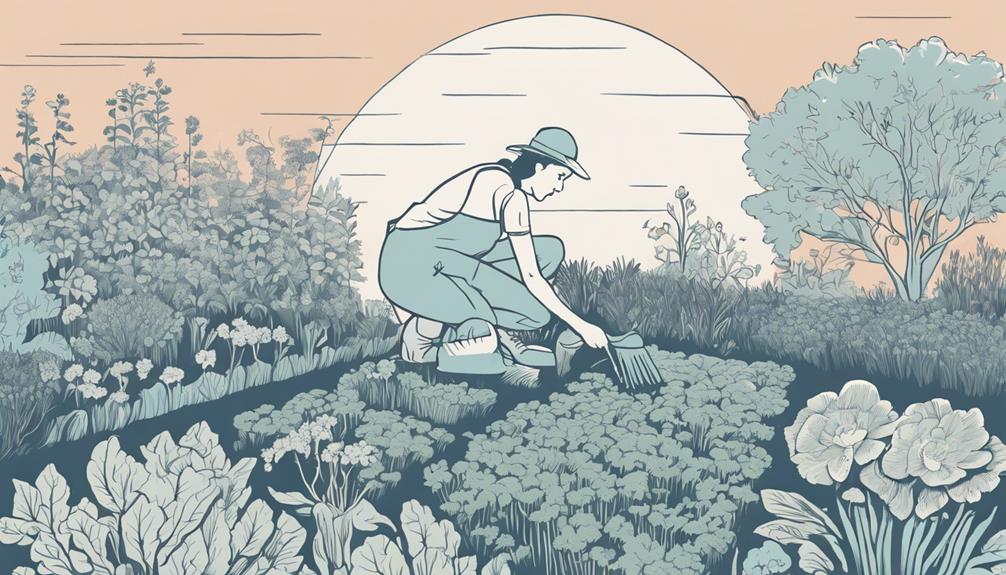How To Become More Self-Sufficient Without Starting a Full-Blown Farm…
Want to start preserving your harvest, making your own soap, or building a backyard root cellar — but not sure where to begin? “Homesteading Advice” gives you instant lifetime access to 35+ practical homesteading books on food preservation, veggie gardening, DIY natural cleaning products (save over $250 per year with this skill alone), brewing, off-grid energy, and a whole lot more…
Click Here To Check It Out Now!
“I’m getting ready to start a backyard farm here in Glasgow, Scotland, and I’m particularly interested in growing cool-season crops. Could you give me some advice on the best time to plant them and any important considerations? My aim is to use the space most effectively. I’ve got limited sunlight but relatively mild temperatures.” Thanks, Malcolm, Glasgow, Scotland.
When Should I Plant Cool-Season Crops?
Hello Malcolm, it sounds like you’ve got a fantastic project ahead of you! Cool-season crops are a wonderful choice for a backyard farm, especially in a climate like Glasgow’s, where mild temperatures prevail. These crops thrive in cooler weather and can often be planted early in the spring or later in the fall. Let’s go through some important timing and considerations to help you get the most out of your garden.
Understanding Cool-Season Crops
Cool-season crops prefer lower temperatures and can even tolerate a bit of frost. They include a variety of vegetables and greens that are packed with nutrients and add diversity to your garden. Common examples include:
- Leafy greens: Spinach, lettuce, kale, Swiss chard
- Root vegetables: Carrots, radishes, turnips, beets
- Legumes: Peas, broad beans
- Brassicas: Broccoli, cauliflower, Brussels sprouts, cabbage
- Alliums: Garlic, onions, leeks
Timing for Planting Cool-Season Crops
Timing is everything when it comes to cool-season crops. Here are some guidelines to help you determine the best planting times:
Spring Planting
In spring, you can generally start planting once the soil has thawed and is workable. For Glasgow:
- **Leafy greens & root vegetables**: Sow seeds directly in the ground as early as late February to March.
- **Legumes**: Plant peas and broad beans in late February to March, as they can handle light frost.
- **Brassicas & alliums**: Start seeds indoors in late January to February and transplant them outside in March-April.
Keep an eye on the weather and make sure your seedlings don’t get frozen. A row cover can help protect early plantings from unexpected frosts.
Fall Planting
Planting cool-season crops in the fall can extend your harvest well into winter. Here’s what you can do:
- **Leafy greens & root vegetables**: Sow seeds in late July to early August for a fall harvest.
- **Legumes**: Plant in late July for an early autumn harvest.
- **Brassicas & alliums**: Start seeds in June-July and transplant outdoors in August.
Consider using mulch to keep the soil warm and retain moisture as the weather gets cooler.
Soil Preparation and Fertility
Healthy soil is the backbone of any successful garden. Here are a few soil prep tips:
- **Test your soil**: Before planting, it’s a good idea to test your soil’s pH and nutrient levels. Cool-season crops generally prefer slightly acidic to neutral soil with a pH of 6.0 to 7.0.
- **Amend with compost**: Add well-aged compost to improve soil structure, moisture retention, and fertility.
- **Fertilizing**: A balanced organic fertilizer can provide the nutrients your crops need. Look for one that contains nitrogen, phosphorus, and potassium.
Sunlight and Spacing
Malcolm, since your garden experiences limited sunlight, make sure to optimize the placement of your crops:
- **Maximize light**: Locate your garden in the sunniest spot available. Cool-season crops need about 4-6 hours of sunlight a day.
- **Proper spacing**: Avoid overcrowding by following proper spacing guidelines. This ensures adequate air circulation and reduces disease risk.
Watering Practices
Cool-season crops prefer consistent moisture levels. Here are a few tips:
- **Regular watering**: Keep the soil consistently moist but not waterlogged. Water at the base of plants to minimize leaf wetness and reduce disease risk.
- **Mulching**: Mulch helps retain soil moisture and suppresses weeds.
- **Drip irrigation**: Consider installing a drip irrigation system for even and efficient watering.
Pest and Disease Management
Cool-season crops can attract certain pests and diseases. Stay vigilant with these practices:
- **Crop rotation**: Change the location of crops each year to prevent soil-borne diseases and pests.
- **Companion planting**: Pair certain plants together to naturally repel pests. For example, marigolds deter aphids, and garlic can repel beetles.
- **Natural pest control**: Use organic methods like neem oil, insecticidal soaps, or beneficial insects to manage pests.
Harvesting Tips
Knowing when to harvest ensures your crops are at their peak flavor and nutritional value:
- **Leafy greens**: Harvest outer leaves as needed, allowing the plant to continue producing.
- **Root vegetables**: Check for maturity by gently probing the soil or reading seed packet guidelines.
- **Legumes**: Pick peas and beans when they’re plump but still tender.
- **Brassicas**: Harvest cabbage when heads are firm, and pick broccoli and cauliflower when florets are tight.
- **Alliums**: Harvest onions and garlic when tops start to yellow and fall over.
Final Thoughts…
Malcolm, thank you for your question! Growing cool-season crops can be incredibly rewarding, even in a city like Glasgow where the climate is just right for these hardy vegetables. Remember to pay close attention to the timing, ensure your soil is healthy, maintain consistent moisture levels, and manage pests naturally. Enjoy your backyard farm and all the wonderful produce it will bring!

